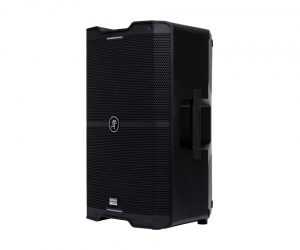
The Professional Voice: Jacquire King
The victory of the DAW, and corresponding decimation of the cost of pro audio equipment was one of the main factors behind the collapse of the commercial studio industry. This whirlwind of closing studios, lowering recording budgets, improving digital audio sound quality and endless options and effects at the press of a button, turned the worlds of all engineers, mixers and producers upside down. Throughout this issue, Paul Tingen asks nine of the world’s leading studio practitioners to elaborate on what has changed for them since 1998, homing in on the pieces of gear they consider to have been game changers, and the working methods they use today, which they didn’t in 1998.
JACQUIRE KING
Tom Waits, Modest Mouse, Buddy Guy, Norah Jones, Kings of Leon, Of Monsters and Men, Josh Ritter, Melissa Etheridge, Dawes.
After several years of working in his own facility, King currently works out of Studio G at Blackbird Studios in Nashville. The three-time Grammy winner has a hybrid analogue/in-the-box approach, using an Avid ProControl with his Quad Eight analogue console to patch in his extensive outboard collection.

King: “15 years ago I recorded everything to a multi-track analogue tape machine, going into a console for a mix that featured all outboard effects, and printing to a two-track tape machine. I sometimes had a ProTools rig locked up to the multi-track. In the last 10 years I’ve been working with a hybrid set-up, sometimes recording to analogue tape, and sometimes directly to ProTools, and in general using lots of plug-ins and automation in the computer. During the mix I stem things out and sum them in the analogue domain again. I recently recorded an Editors album to analogue tape, but unless there is a very specific discussion with the artist that results in us wanting to record on analogue, I don’t use tape very much anymore. Tape simulation plug-ins have become so good, that this is not really necessary anymore. I now record directly to ProTools most of the time, and I add hardware effects, like plate reverbs or delay like the Cooper Time Cube, during tracking. While mixing, almost all the effects are plug-ins, I love the UA plug-ins. I have mixed some things entirely in-the-box, but I have never been totally happy with that because of my traditional upbringing in making records, so I still send stems out to the Quad Eight, and use some external analogue compression or EQ and sum things on the console.
GAME CHANGERS
PROTOOLS DELAY COMPENSATION,
MASSENBURG DESIGNWORKS EQ5,
EMPIRICAL LABS DISTRESSOR
15 years ago even the best and biggest studio in the world wouldn’t have had what you can now with a good arsenal of plug-ins
“The biggest game changer has been that delay compensation works well enough so that computers can be used for mixing, and are more than just a convenient recording and editing medium. 24-bit has given us higher fidelity, I think the increased bit depth is more important than higher sampling rate, though in the end the most important thing is the quality of the converter. I still use my Apogee PSX100 A/D converters; the analogue components that were put in those things were of very high quality. I also think the Distressor is probably the greatest modern compressor made, and the Massenburg EQ5 is the only EQ plug-in I use.
I think in general the amount of gear that we now all have available to us is making a big difference. 15 years ago even the best and biggest studio in the world wouldn’t have had what you can now with a good arsenal of plug-ins. As for specific new mixing methods, I use parallel compression a lot more than I did in the past, similar to what Michael Brauer does, with different parallel bus compression paths combined. Stems are another big development. You can record many more tracks and make your blends later in the computer, which means that you can delay your decisions. It’s convenient and gives you a lot of flexibility, but the downfall can be that you’re not making decisions as you go. It’s a trade-off.”
















RESPONSES